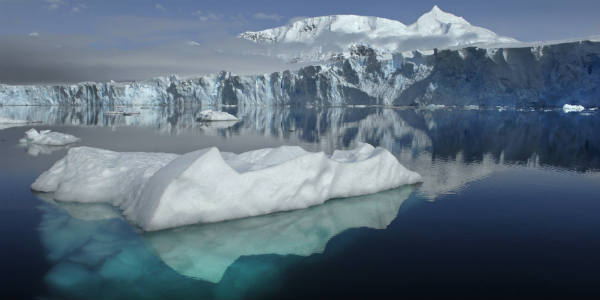
A giant iceberg broke off from the Larsen C ice shelf in eastern parts of Antarctic Peninsula in July 2017. The breaking unveiled a large portion of ocean that has existed for more than 100,000 years beneath this ice sheet. This thing came out as a world that existed even before the evolution of the human neocortex.
This finding was led by Boris Dorschel, with the Alfred Wegener Institute, Helmholtz Centre for Polar and Marine Research (AWI), chief scientist of a 45-strong international team on board the German research icebreaker Polarstern
In the event that the group succeeds, it could index an abundance of novel examples, says Huw Griffiths from the British Antarctic Survey (BAS). "We've been examining Antarctica for quite a while now, however even in zones we think we know really well – about 10% of what I find at the base of the ocean is new to science. Along these lines, I'm expecting that in a zone that nobody's at any point been to previously – for that number to be a lot higher, and for there to be a more extensive assortment of new species," he revealed to BBC News.
The 5,800 sq km solidified section split far from the landmass in 2017, reports the BBC, uncovering sea depths that had been secured for no less than 120,000 years. A Delaware-sized ice sheet, appeared as follows, calved when a split in the Larsen C ice rack achieved the Weddell Sea. In this satellite picture from September, breaks are obvious in the ice and mists cast a shadow on the new ice shelf.
The scientists will require fortunes on their side, in any case. The area they are focusing in the Weddell Sea is famous for thick ocean ice. "It's exciting to investigate one of the keeps going white spots on Earth," says Dorschel, who is based at the Alfred Wegener Institute for Polar and Marine Research in Bremerhaven, Germany. "In any case, it's a frightening undertaking, as well. Neighborhood climate and ice conditions may meddle whenever."
Researchers are quick to investigate what species may have flourished under the ice, and how the biological system has adapted to the sudden change, observes Nature. The main endeavor to do as such failed a year ago, when ocean ice up to 5 meters thick constrained the James Clark Ross vessel, worked by the British Antarctic Survey (BAS), to turn back in February 2018.
In January, a group on board the South African research vessel Agulhas II tied down at a site 200 kilometers north of where the ice sheet severed. It took sea and ocean depths tests there, however ocean ice conditions and other research needs implied it went poorly south. The Polarstern will presently endeavor to progress more remote south, to the site where the chunk of ice calved.
The Polarstern, worked by the Alfred Wegener Institute, is Germany's lead polar wayfarer vessel and a standout amongst the best-prepared research icebreakers on the planet. Satellite symbolism and renaissance flights by its two helicopters will manage the ship through the pack ice — ice gliding in the ocean, shaped by littler pieces solidifying together — which can be bottomless even in southern summer months, when the degree of ocean ice is near its yearly least.
On the off chance that ice, and climate conditions permit, the group could achieve the site from Chile inside only a couple of days. The researchers would then have half a month of southern summer to broadly test sea fauna and science, and to delineate unknown seabed.
Tests gathered in the perfect zone, totally unaffected by business angling or other human exercises, would be a significant asset for biodiversity analysts. The information could assist researchers with addressing questions identifying with how marine networks create, and how rapidly new species colonize beforehand ice-secured regions, says Linse.
Quickly rising temperatures noticeable all around and sea around the Antarctic promontory, a hotspot of worldwide environmental change, reports Nature, add desperation to such research: any adjustments in species piece and sustenance web structure following the vanishing of ice may reveal insight into the destiny of polar biological communities in a warming world.
Image Credit: Pininterest
Please Note: Any information picked from here must be attributed to skymetweather.com


